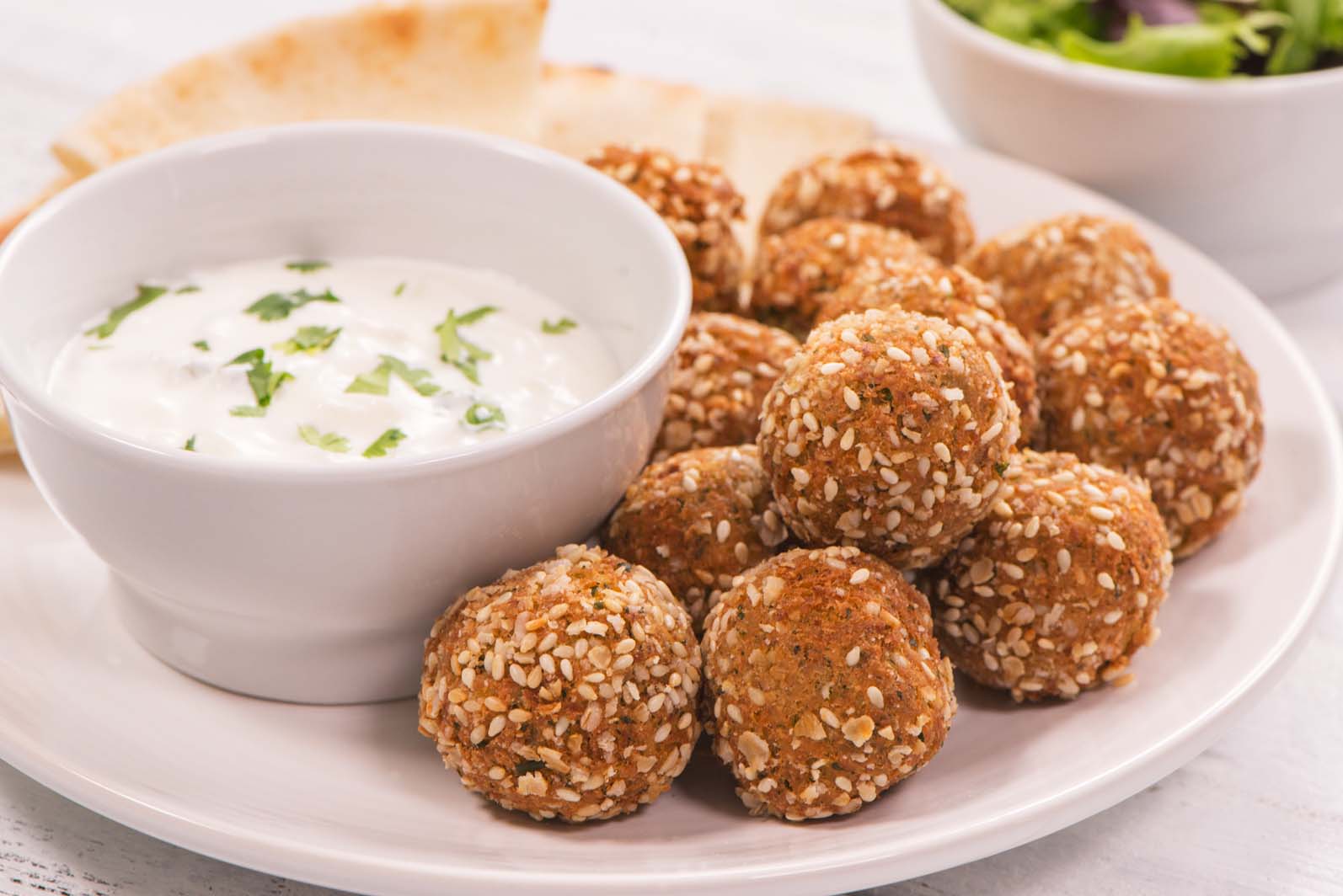Falafel is thought to have originated in Alexandria, Egypt during the times of the Roman Empire. Because Alexandria was a port city, this portable and easy to eat on-the-go food quickly spread all over the region.
In recent years the popularity of falafel has grown immensely, and it is now a common food around the world, with people from every continent putting their own spin on the dish.
So, when it came time to break in our new deep fryer, it was a no-brainer – we had to make falafel. And, you know us – we had to give it a little twist. Our version of falafel is lightly spiced and rolled in a mixture of oats and sesame seeds for a crunchy exterior.
Our ideal falafel is crisp on the outside and light and tender on the inside, and did these falafels ever deliver on that front! We know they were going to be good, but that oat and sesame seed crust exceeded our expectations.
The deliciously crispy exterior isn’t the only part of these falafels we used oats in. We also used oat flour in the falafel dough, which helped keep them light and give them the tenderness we were looking for. One of the big benefits to using oat flour is that it tends to hold a little more moisture, allowing foods to stay soft and tender.
You can cook your falafels like we did in a deep fryer. Or, if you’re finding you kitchen a little short on deep fryers, a large heavy-bottomed sauce pan will do just fine. Remember to keep safety in mind when frying with oil.
When it’s time to enjoy the falafels of your labor, we recommend serving them street-food style – three or four in a pita pocket with lettuce, tomato, onion and a drizzle of hot sauce or tahini (or both!) Or, serve them on top of a green salad for a light summer meal.

Falafel
Ingrédients
For coating:
- 1/2 cup rolled oats (or quick oats) (125 ml)
- 1/4 cup sesame seeds (60 ml)
For falafel:
- 1 19 oz chickpeas (canned) drained, rinsed and patted dry (540 ml)
- 1 cup onion diced (250 ml)
- 3 cloves garlic chopped
- 1/4 cup cilantro leaves packed (60 ml)
- 2 tsp cumin ground (10 ml)
- 1 tsp salt (5 ml)
- black pepper freshly ground, to taste
- 1/2 tsp baking powder (5 ml)
- 1/4 cup oat flour (60 ml)
- canola oil for frying
Instructions
To make coating:
- In a food processor, grind together oats and sesame seeds until the mixture resembles very fine breadcrumbs. Place in a shallow dish.
To make falafel:
- Place the chickpeas, onion, garlic, cilantro, cumin, salt and pepper into the bowl of a food processor. Pulse to chop, then process until you have a coarse dough. Transfer mixture to a mixing bowl.
- Fold in baking powder and oat flour, adding additional oat flour, if necessary, until mixture can be formed into a ball.
- Cover and refrigerate for a couple hours to firm up. *Do not skip this step*
- Form the chilled mixture into walnut sized balls, and gently roll in sesame-oat coating.
- Heat oil in a deep fryer, or large, heavy-bottomed saucepan, to 375o F.
- Fry six to 12 balls at a time until golden brown, flipping once. Watch carefully!
- Remove from oil and drain on a paper towel.
- Serve warm, tucked into pita bread pockets with shredded lettuce, chopped tomato, sliced onion, and tahini or yogurt sauce, or as an accompaniment to a tossed salad.
Note
- To make your own oat flour, process rolled or quick-cooking oats in a food processor until finely ground and powdery. Use more oats than the amount of flour needed, then sift and measure after processing.




